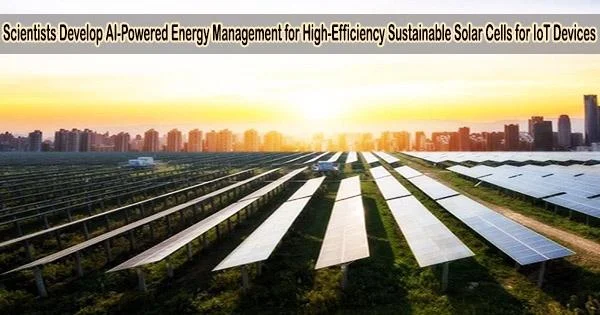Newcastle University researchers have created environmentally-friendly, high-efficiency photovoltaic cells that harness ambient light to power internet of Things (IoT) devices.
The research team from the School of Natural and Environmental Sciences (SNES), under the direction of Dr. Marina Freitag, developed dye-sensitized photovoltaic cells based on a copper(II/I) electrolyte, achieving an unprecedented power conversion efficiency of 38% and 1.0V open-circuit voltage at 1,000 lux (fluorescent lamp). The cells, which are safe for the environment and non-toxic, raise the bar for reusable energy sources in natural settings.
The study, which was published in the journal Chemical Science, has the potential to completely alter how IoT devices are powered, making them more effective and sustainable while also creating new opportunities in sectors like healthcare, manufacturing, and smart city development.
Dr. Marina Freitag, Principal Investigator at SNES, Newcastle University, said: “Our research marks an important step towards making IoT devices more sustainable and energy-efficient. By combining innovative photovoltaic cells with intelligent energy management techniques, we are paving the way for a multitude of new device implementations that will have far-reaching applications in various industries.”
The researchers to forecast changing deployment circumstances and adjust the computational load of IoT sensors accordingly used long short-term memory (LSTM) artificial neural networks. This technique for energy management was also novel.
With the help of this dynamic energy management system, the energy-harvesting circuit may run as efficiently as possible while reducing power losses or brownouts.
This ground-breaking study reveals how artificial intelligence and ambient light as a power source can work together to allow the next wave of Internet of Things devices.
The high-efficiency ambient photovoltaic cells that power the energy-efficient IoT sensors may dynamically alter their energy use based on LSTM predictions, leading to significant energy savings and decreased network communication needs.
















